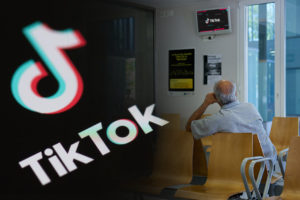Chief marketing officers (CMOs) have gained ground in the C-suite and often hold a seat at the table when companies define and pursue strategic decisions. CMOs should also get a seat at the information technology (IT) table. Whether you’re in higher education, retail or a service industry, digital communications should be user experience (UX) focused. Millennials and Gen Z have had technology for their entire lives. These customers should be able to engage with companies easily, at any time, and in a less structured way than the C-suite may be accustomed to. Social media, mobile apps, chatbots and text are all examples of the tools many younger, tech-savvy customers use — and likely expect companies to be ready, willing and able to provide. Their messaging, marketing and engagement should align with efforts to provide the right tech tool for customers’ needs. One can have a campaign that aligns well with the company’s and target audience’s needs, but if the technology it advertises lacks innovation and ease, the ROI will be less than desired.
For these reasons, some companies have a dedicated UX expert — but many do not. And that’s where a strong relationship between IT and marketing professionals within the organization can help. For example, at my employer, not only did IT services and university communications teams collaborate to launch a mobile app, but we also did so using shared resources. We collaborated and hired employees who reported directly to both communications and IT. We empowered these individuals to transform the digital experience, and they are leading the university through a digital transformation. Supervisors of these employees collaborate on a weekly basis to help keep priorities aligned and projects running smoothly.
The close collaboration between IT and marketing enables tech experts and content creators to learn from each other and expand their individual skills while improving the user experience. For example, a tech expert may show a content expert how to transform a print magazine story into an engaging, interactive website experience. And the content expert can show the tech expert how the piece relates to the targeted end user, the brand and the strategic marketing campaign underway. Together, they can assess:
• What the user truly needs.
• How they can best present that information to reach the collective ROI goal.
• What they need to track in order to connect to integrated marketing and communications goals.
• Which technology tool (texting, mobile app, chatbot or website) is best to carry the message to the target audience.
• How the user wants to interact with each digital tool.
Marketers and IT professionals can both answer these questions from their respective lenses. Marketers have the background research and knowledge about the target audience and know how to connect them to the company’s strategic plans. IT professionals can create and implement customized experiences, flow diagrams displaying user behavior and more. Both the marketing and the IT teams likely have experience testing user interactions through A/B testing, layouts, links, copy, imagery and more. When the two areas collaborate, the user and the company can benefit.
By working closely together, IT and marketing can help transform the user experience, which can result in key target audiences returning again and again for more. This endeavor will take time, patience and open lines of communication. Regular, candid conversation regarding shared goals can help teams create innovative marketing technologies that can transform a company. It starts with ensuring marketers have a seat around the IT table.
For full article visit Forbes
Our work is always to Earn Trust, Build Reputation, Widen Influence to grow your brand and business.






